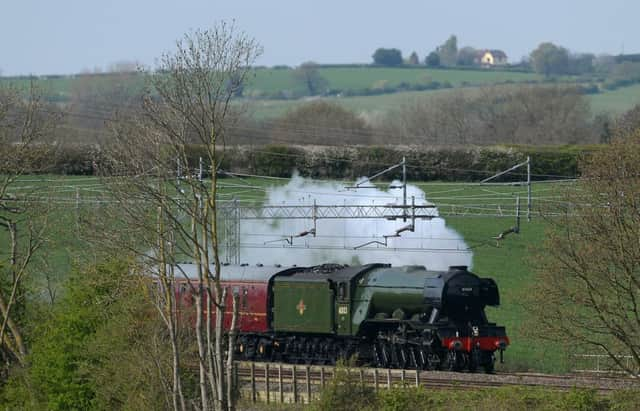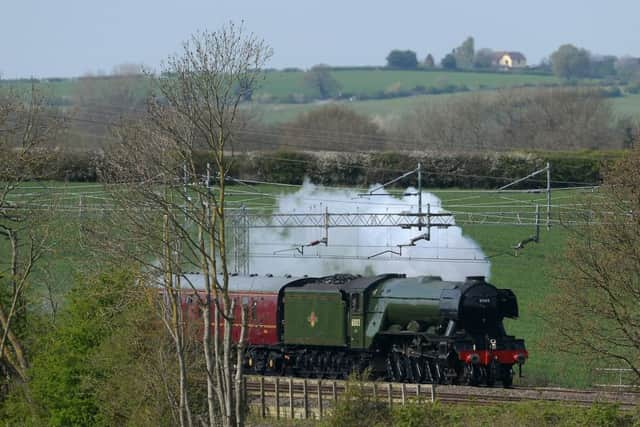Video: Flying Scotsman struggles to climb hill


The Flying Scotsman - built by LNER in 1923 to pull express trains from Edinburgh to London - was in Somerset last week but struggled to get to grips with slippery tracks on Crowcombe Hill near Taunton.
The 94-year-old engine slid backwards as it battled to keep going up the wet track - and then faced the ignominy of needing a helping hand from another locomotive.
Advertisement
Hide AdAdvertisement
Hide AdA second train was coupled behind it to push it along and it eventually crawled its way to the top, puffing steam as it went.


Footage of the incident was taken by a passerby and has been shared numerous times on Facebook,
Staff on the heritage railway blamed wet weather and slippery tracks.
Fellow passenger ‘Quantock Ranger’ wrote: “Great work by West Somerset Railway as rescue was achieved very quickly.
“Think they’d anticipated FS might have problems as she’s designed for speed, not steep slippery hills.”


Thomas Macrae, who was in the second carriage with his “train mad” son, commented on the Facebook video: “The staff were brilliant and kept all informed.”
The Flying Scotsman was the first locomotive to break the 100mph barrier and also set a record for the longest non-stop run by a steam locomotive when it ran 422 miles in August 1989 while in Australia.
It retired from regular service in 1963 after covering more than two million miles.
The locomotive was purchased by the National Railway Museum in York and subject to a £4.2m overhaul, returning to pull special excursion trains in 2016.